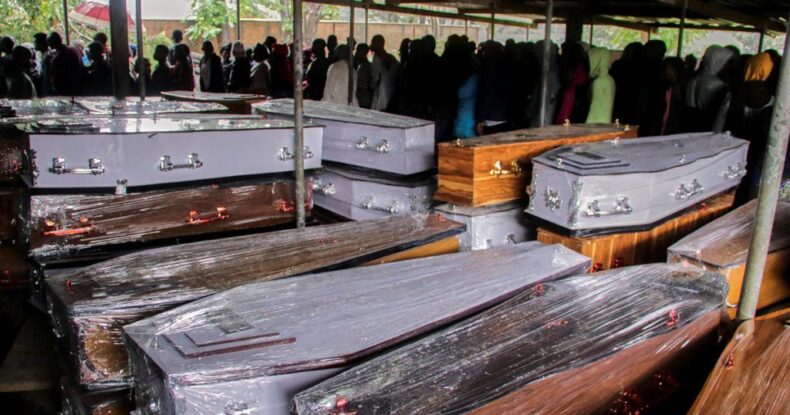Over the weekend, tropical cyclone Freddy struck southern Africa’s shore once more, killing more than 220 people in Malawi, Mozambique, and Madagascar.
According to meteorologists, the month-long hurricane has already shattered one record and may break two more.
Stronger storms are being fueled by heat energy from the water’s top as ocean temperatures rise due to climate change.
As reported by the World Meteorological Organization, Freddy has produced roughly as much cumulative cyclone energy as a typical full North Atlantic hurricane season.
Authorities in Malawi reported 190 fatalities by Tuesday afternoon, in addition to hundreds of injuries and missing persons. Officially, 20 people had died in nearby Mozambique.
In Blantyre, Malawi’s second-largest city, which is hilly, many of the deceased were killed by mudslides. Residents were left gazing in astonishment at enormous ravines in their paths and having to scramble across improvised bridges as the rain persisted. Torrential rain had swept away numerous homes and toppled several trees.
In the midst of the destruction, bodies continued to be removed. As search and rescue efforts go on, it is still unclear how much harm and lives were lost.
According to Malawi’s administration, nearly 60,000 people were impacted, of whom 19,000 were forced from their homes.
Freddy formed off the coast of Australia, journeyed more than 8,000 km (4,970 miles) across the south Indian Ocean, and made an impact in Madagascar and Mozambique in late February.
Then, after making a loop, it struck Mozambique’s coast once more two weeks later before heading interior to Malawi.
According to the US National Oceanic and Atmospheric Administration, no other tropical cyclones that have been seen in this region of the globe in the last 20 years have traveled across the Indian Ocean in this manner.
While they waited to pick up their loved ones’ bodies from the mortuary at Queen Elizabeth Central Hospital, families in Blantyre were calculating the expense of the storm.
According to aid organizations, the flooding and weather have hampered rescue efforts and made it challenging to get aid to those in need.
It’s a difficult operation because there have been mudslide incidents and people are getting trapped in the mud accumulations, according to Estere Tsoka, a disaster expert with UNICEF in Malawi.
On Saturday, Freddy pounded central Mozambique, tearing off roofs and causing extensive flooding near the port of Quelimane. Later, Freddy moved north toward Malawi with heavy downpours that triggered landslides.
The complete extent of the destruction and fatalities in Mozambique are still being determined, but the total number of fatalities since Freddy’s initial landfall in February is currently estimated to be more than 220 in Malawi, Mozambique, and Madagascar.
According to Alcidio Benjamim, the provincial manager for the aid group ForAfrika in Mozambique, the regions of Sofala and Zambezia were severely impacted by the most recent disaster. According to him, as of Monday, 22,000 individuals, or 4,000 families, were looking for housing in the Zambezia province.
Freddy is consistent with predictions, but experts are hesitant to state whether it can be directly linked to climate change, a phenomenon measured over time rather than through singular events.
According to the Intergovernmental Panel on Climate Change (IPCC) report, this kind of catastrophic tropical cyclone event is not unexpected given earlier forecasts that cyclones would intensify, said Lazenby.
According to Florida State University assistant professor Allison Wing, overall climate change is intensifying and moistening cyclones and raising the likelihood of flooding along the coast from storm surges due to sea-level rise.
Nevertheless, there is proof that tropical cyclones are intensifying, particularly the strongest storms, according to Wing.













